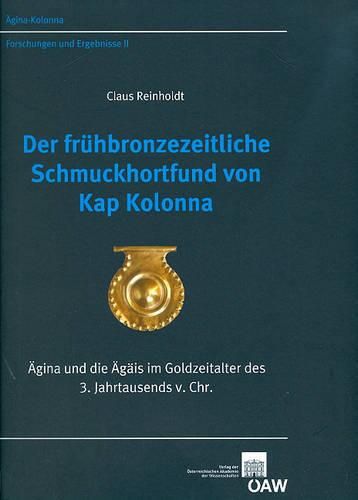Readings Newsletter
Become a Readings Member to make your shopping experience even easier.
Sign in or sign up for free!
You’re not far away from qualifying for FREE standard shipping within Australia
You’ve qualified for FREE standard shipping within Australia
The cart is loading…






The jewellery hoard excavated under the floor of an Early Bronze Age house-unit in the prehistoric settlement of Cape Kolonna/Aigina represents in many ways an exceptional collection still unique in the central Aegean of the late third millenium B.C. The material consists of precious metals (gold, silver) and several nonmetallic valuable objects (carnalian, rock-crystal, frit) and belongs to a secondary hoard of pins, pendants and beads, partly bent for the deposit context (pins). Concerning their original typological function some of the objects represent particular remaining stocks. Apart from a small carnalian bead decorated in the typical Mesopotamian etching-technique, other items of the deposit represent products of Anatolian and Mesopotamian jewellery crafts. The hoard casts new light on the relationship between the central Aegean and the Eastern advanced civilisations of Anatolia and Mesopotamia, a relationship that has as yet only been illustrated with respect to a few oriental exotica in the Aegean. A general investigation of all these foreign precious objects in the Aegean during the third millennium where the hoard from Cape Colonna can be added as an important new complex shows that the contacts on the part of the Eastern civilisations during the Early Dynastic Period do not form real trade activities controlled by direct and regular economical conditions. The appearance of foreign precious objects in the Aegean is the result of staggered stages in early and more accidental commercial contacts which can nevertheless bridge long geographical distances and spaces and which consist of a complex system of interlocked and small-spaced networks and merchant units.
$9.00 standard shipping within Australia
FREE standard shipping within Australia for orders over $100.00
Express & International shipping calculated at checkout
The jewellery hoard excavated under the floor of an Early Bronze Age house-unit in the prehistoric settlement of Cape Kolonna/Aigina represents in many ways an exceptional collection still unique in the central Aegean of the late third millenium B.C. The material consists of precious metals (gold, silver) and several nonmetallic valuable objects (carnalian, rock-crystal, frit) and belongs to a secondary hoard of pins, pendants and beads, partly bent for the deposit context (pins). Concerning their original typological function some of the objects represent particular remaining stocks. Apart from a small carnalian bead decorated in the typical Mesopotamian etching-technique, other items of the deposit represent products of Anatolian and Mesopotamian jewellery crafts. The hoard casts new light on the relationship between the central Aegean and the Eastern advanced civilisations of Anatolia and Mesopotamia, a relationship that has as yet only been illustrated with respect to a few oriental exotica in the Aegean. A general investigation of all these foreign precious objects in the Aegean during the third millennium where the hoard from Cape Colonna can be added as an important new complex shows that the contacts on the part of the Eastern civilisations during the Early Dynastic Period do not form real trade activities controlled by direct and regular economical conditions. The appearance of foreign precious objects in the Aegean is the result of staggered stages in early and more accidental commercial contacts which can nevertheless bridge long geographical distances and spaces and which consist of a complex system of interlocked and small-spaced networks and merchant units.